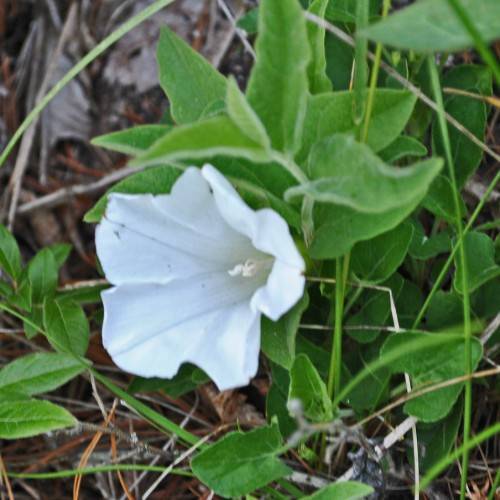
Low False Bindweed
Calystegia spithamaea
Watering:
Frequent
Hardiness Zone:
Sun:
full sun,part shade
Leaf:
Yes
Growth Rate:
Low
Invasive:
Yes
Care Level:
Medium
watering
This species of perennial wildflower prefers warm temperatures, sandy, rocky soil, and a lot of sun. It needs to be watered about once every 3-5 days during the peak of its blooming season (late spring to mid-summer). When watering, keep an eye out for signs of wilt, as the plant may require more frequent watering if the soil stays dry for too long. When watering, water deeply and evenly, taking care to ensure the entire root system is getting wet. Water until some moisture begins to drain out from the bottom of the pot. Watering too often or too frequently can actually be detrimental to this plant, so be sure not to overwater it.
sunlight
Shortstalk False Bindweed, also known as Calystegia silvatica subsp. fraterniflora, is native to western North America and grows best in climates with mild summers and cool winters. The plant grows best in full sun, with minimum direct sunlight in the morning and early afternoon. It requires at least 8 hours of sunlight per day to guarantee optimal growth. In some areas, this plant can also take partial shade. It is also important to note that the direct sunlight should never hit the leaves directly, as this could cause them to burn. Additionally, during times of intense direct sunlight, it is advised to provide shelter from the sun with a sunshade.
pruning
For best results, Shortstalk False Bindweed should be pruned twice a year; once in late winter and again in late summer. When pruning in late winter, cut back any stems that were not pruned in late summer to reduce the overall size of the plant. In late summer, selectively remove stems that appear to be overcrowded or those that are inhibiting the growth of adjacent stems. Prune both the tops and the roots to promote a more vigorous and well-formed growth habit. Pruning during late summer should also address any dead, diseased, or damaged stems. Prune with sharp bypass pruners and cut back stems to roughly half their current size. Educated pruning decisions based on the health of the plant will ensure that Shortstalk False Bindweed will remain a happy and healthy addition to the garden.
